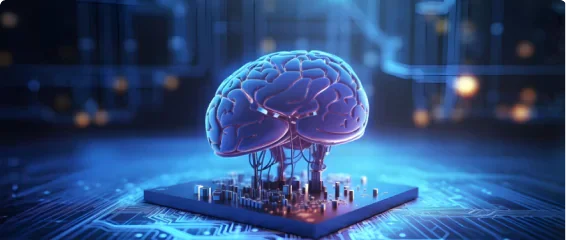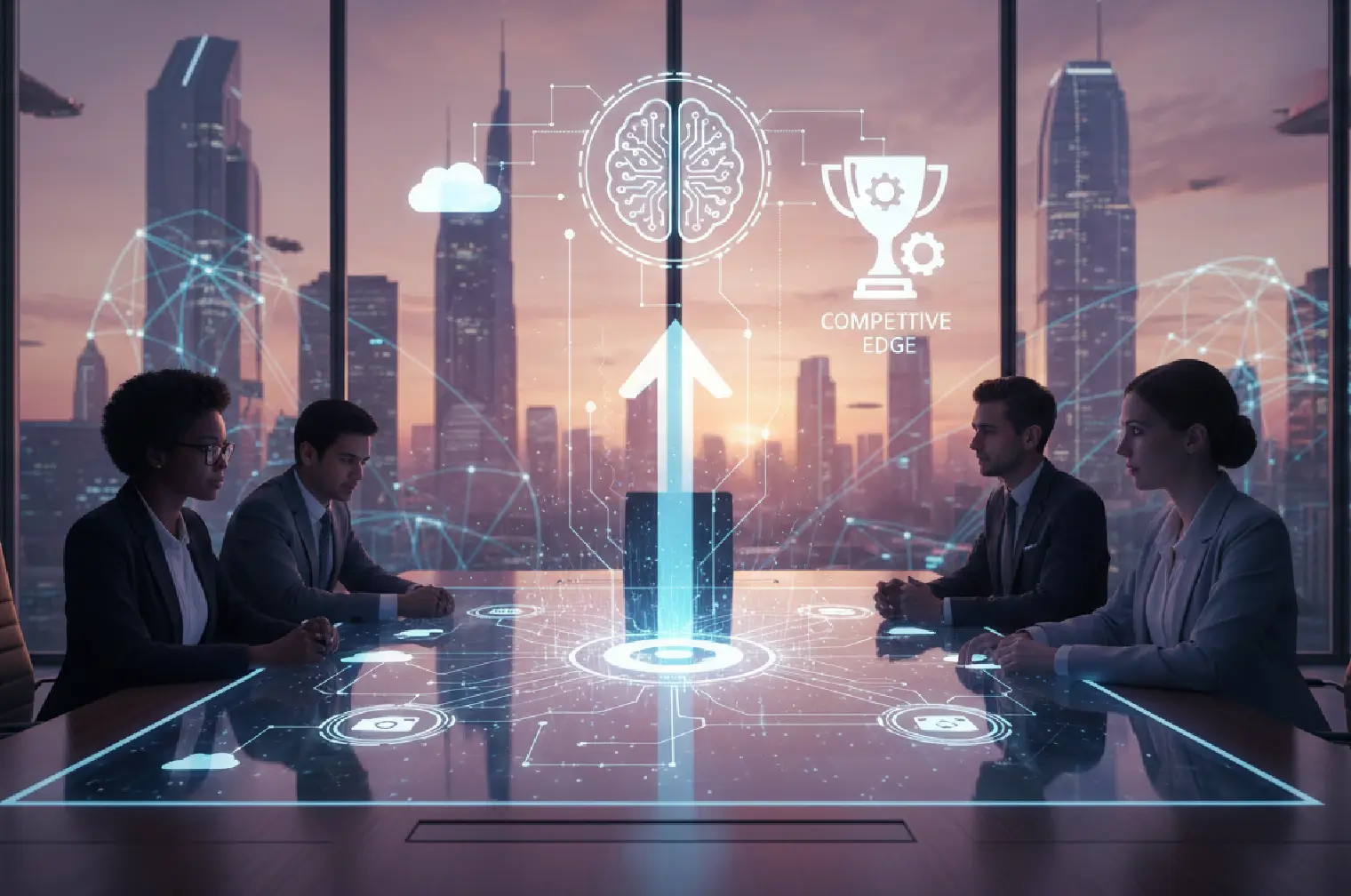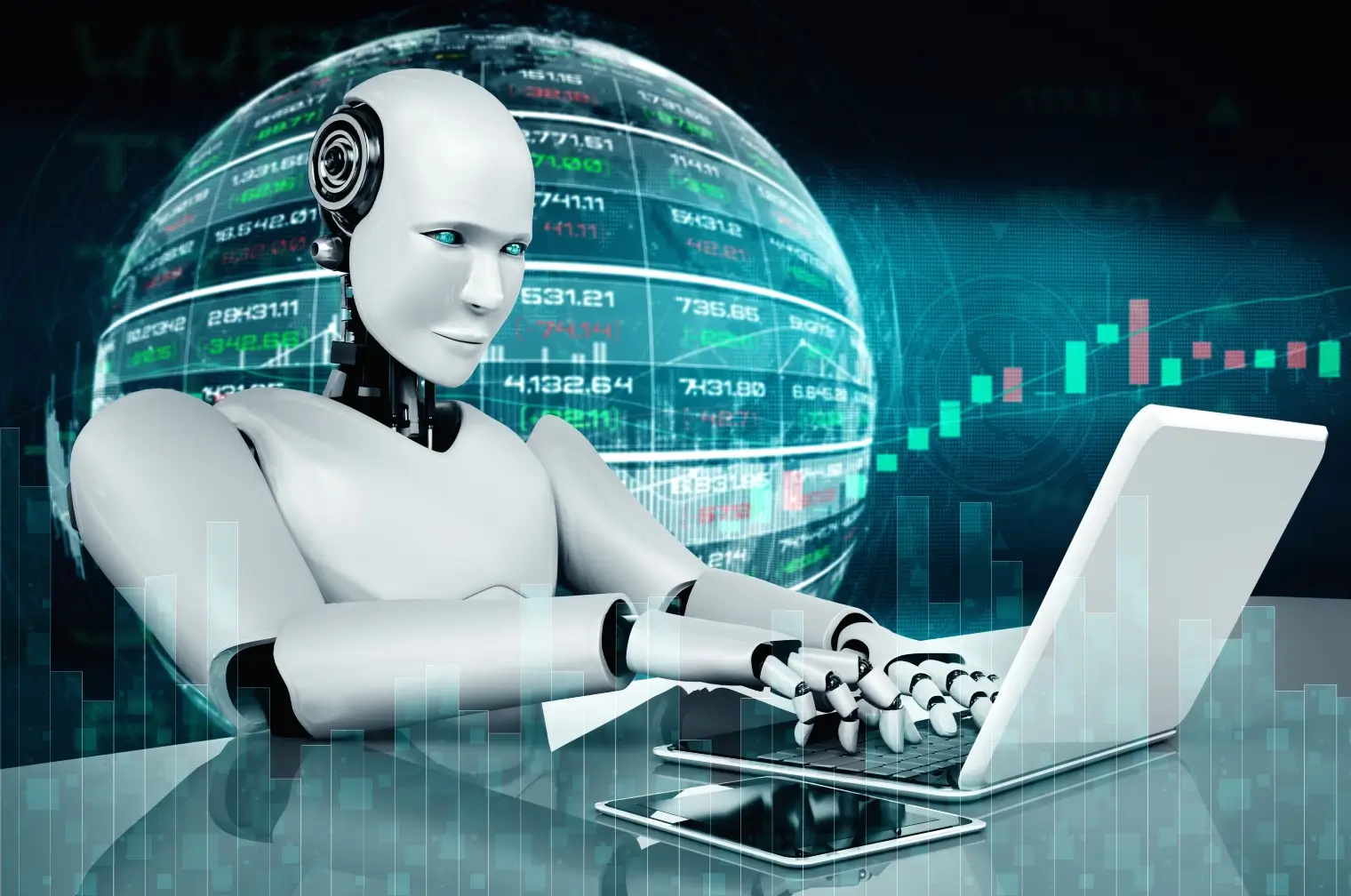Machine Learning and AI for revolution of Tech Companies are changing and streamlining businesses.
Artificial Intelligence is transforming the public sector, bringing cutting-edge innovations that directly address the needs of modern governance. At ViitorCloud, we offer tailored AI solutions to help public sector institutions streamline operations, make smarter decisions, and deliver superior services to citizens—all while achieving AI Public Sector Cost Optimization.
Our AI development services harnesses technologies like machine learning, natural language processing, and robotic process automation to enhance resource allocation, minimize inefficiencies, and ensure that public sector organizations operate more effectively. This results in significant cost savings and promotes a more agile, responsive government that better serves its citizens.
At ViitorCloud, we understand the unique challenges the public sector faces and are here to deliver AI solutions that align with your goals. Whether you’re looking to reduce operational costs or improve service delivery, our AI in Public Sector expertise can guide you toward success.
Let us help you drive change with our AI Development Services and custom AI Solutions, designed to future-proof your organization.
Unlock Cost Optimization with AI in the Public Sector!
Streamline operations and cut costs effortlessly with ViitorCloud’s tailored AI Development Services.
7 Responsibility of Artificial Intelligence in the Public Sector
In what ways does AI change government operations and service delivery to its people? Therefore, from automating administrative tasks to optimizing healthcare diagnostics, predicting crime, managing urban infrastructures, etc. AI transforms the landscape of public administration for AI public sector cost optimization.
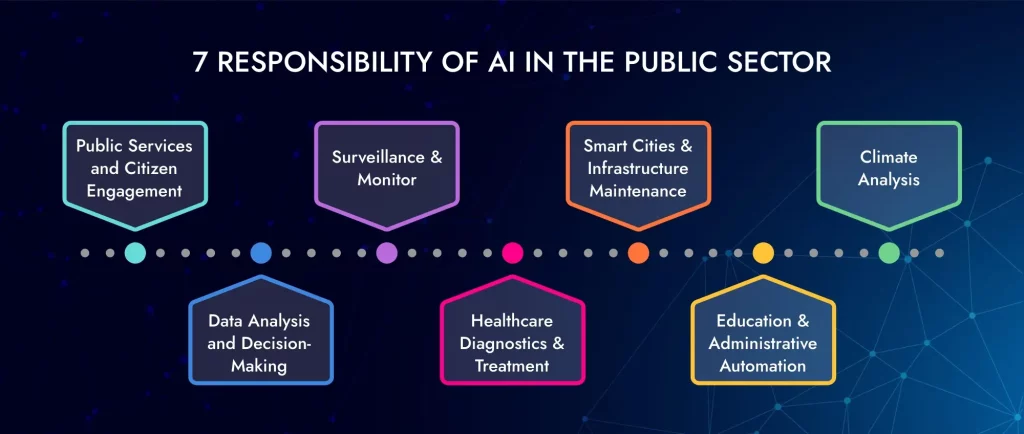
1. Public Services and Citizen Engagement
Have you ever thought about long queues when you go for government services? Imagine chatbots instantly handling routine queries, reducing your wait time, and freeing human resources for more complex issues.
Artificial Intelligence (AI) transforms public services and citizen engagement by automating routine tasks and enhancing interaction efficiency. AI-powered chatbots and virtual assistants handle common queries, reducing wait times and allowing government employees to focus on more complex issues. The World Health Organization (WHO) estimates that 1.3 million people die in road crashes annually. Governments can significantly improve road safety and reduce these fatalities by effectively integrating AI into transportation systems.
Also, AI in public sector systems helps increase access to support systems since these types of AIs provide 24/7 support, eventually leading to higher satisfaction rates among citizens. Additionally, AI public sector cost optimization solutions can use these tools to analyze citizen feedback from various channels and help them understand community expectations.
2. Data Analysis and Decision-Making
Are you confident that every step officials make is based on accurate data? This means using computers over people gives users correct decisions even if not so safe.
Being able to do this makes it easier than relying on human beings, hence aiding in making informed choices on many things such as what one must buy or invest his money in according to his/her needs.
AI is more capable of analytical tooling than humans, thus making better decisions in the public sector. Governments collect much data from various sources, such as public records, surveys, and even social media.
Patterns, trends, and exceptions can rapidly be identified by AI public sector cost optimization algorithms that influence policy-making and resource allocation.
3. Surveillance & Monitor
Regarding public safety, AI improves surveillance and monitoring capabilities thus preventing crimes and ensuring security. AI cameras can detect strange activity or movements humans can see, but they raise an alarm for further investigation.
Therefore, these systems are used to quickly scan through hours of CCTV footage to identify potential threats and make it possible for immediate responses if emergencies arise. However, compliance with ethical guidelines will ensure public safety while maintaining privacy.
4. Healthcare Diagnostics & Treatment
In this sector, AI changes healthcare diagnostics and treatment by increasing the proficiency of medical personnel. Medical images including X-rays or MRIs are examined by artificial intelligence, and they detect or diagnose diseases quickly.
These models are trained with actionable health information from individual patients to predict patient outcomes and provide personalized care plans. They help in AI-driven cost reduction in the public sector associated with disease prevention and intervention programs delivered through the channel of local governments while ensuring better quality care.
AI-based telemedicine platforms also promote access since patients can receive medical consultations remotely. It is projected that by 2030 healthcare AI market will reach $187.95 bn. In addition, by 2026, the robot-assisted surgery market may amount to up to $40bn.
5. Smart Cities and Infrastructure Maintenance
Do you think your city could be more efficient and environmentally friendly? Can smart cities featuring AI optimize traffic flows, manage energy usage, and predict infrastructure maintenance needs?
Artificial intelligence solutions enabling urban optimization have become vital for smart city initiatives. Sensor-based AI systems monitor real-time data that reduces congestion and improves travel times.
6. Education & Administrative Automation
The education sector has been simplified by automating administrative processes, making teachers focus on teaching rather than paperwork due to artificial intelligence systems. For instance, teacher workloads have been reduced significantly by providing automated enrolment facilities and scheduling and grading functionality for schools handled through Artificial Intelligence technology.
Personalized learning platforms bring in an aspect of AI that allows educational content to be adapted for individual students’ needs, thereby improving learning outcomes. Moreover, it is possible to evaluate academic data with the help of artificial intelligence to identify challenges that affect different areas, thus making it easy to deal with them.
7. Climate Analysis
Are you worried about climate change and what it will do to us? Using AI technologies, we can analyze climate data to predict trends and develop strategies to mitigate the effects of climate change.
AI plays a crucial role in addressing climate change by analyzing environmental data and projecting future trends. Machine learning models based on massive datasets collected through satellites and weather stations, among others, can predict climate patterns while evaluating human activity’s impacts. This information helps policymakers develop ways to mitigate climate change, such as opting for resource use, planning for extreme weather events, or reducing greenhouse gas emissions.
Environmental conservation and sustainability become more effective due to insights driven by artificial intelligence (AI). Public sector AI integration strategy significantly enhances efficiency, service delivery, and decision-making.
Cut Costs and Enhance Efficiency with AI!
Let ViitorCloud’s AI Development Services help you optimize resources and improve performance.
How can AI Save Costs in the Public Sector?
Artificial Intelligence (AI) possesses transformative potentialities in public services, which optimize operations, enable better provision of services, and save significant costs.
Here’s how AI is making a difference in various areas:
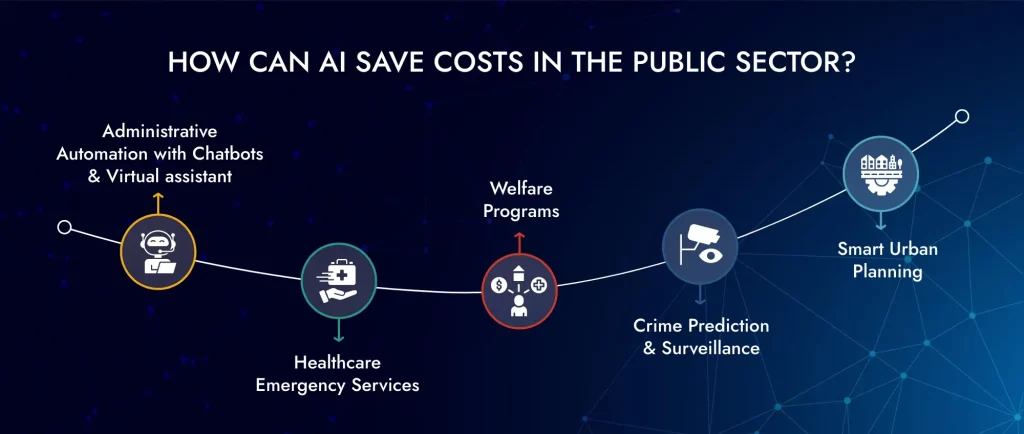
1. Administrative Automation with Chatbots & Virtual Assistant
AI-enabled chatbots and virtual assistants can handle various administrative tasks, including answering citizens’ questions, managing appointments, and processing applications. This automation reduces the need for human intervention in routine tasks, resulting in significant AI-driven cost reduction in the public sector.
Assistance is available all day long via chatbots so people don’t have to wait for working hours. The use of AI to automate repetitive tasks lets employees spend more time on complex problems thereby increasing their overall productivity.
2. Healthcare Emergency Services
AI ensures that healthcare emergency services improve through predictive analytics and response times. These algorithms analyze data to predict potential health crises and allocate resources more efficiently. AI can forecast emergency service demands based on historical data, allowing better resource allocation and reducing unnecessary expenditures.
Faster diagnosis with higher accuracy through AI quickens treatment, thus resulting in fewer hospital stays and reduced costs. Regarding “Chatbots for businesses”, organizations achieve a 64% redirection of efforts by agents toward complex issues as opposed to 50% without AI.
3. Welfare Programs
Streamlined by AI, welfare programs include detecting fraud, automating eligibility checks, and optimizing resource distribution, to mention but a few. It is fostered that this will enable allocating funds where they are most needed to minimize waste.
Fraud prevention can also be enhanced by detecting irregular claims using AI systems, reducing costs. By analyzing huge amounts of data, AI ensures that resources are efficiently distributed so that appropriate benefits of AI in the public sector reach their rightful owners.
4. Crime Prediction & Surveillance
AI technology can boost public safety by predicting crime hotspots and enabling more effective surveillance. A proactive approach like this may help reduce crime rates and associated policing expenditures.
Furthermore, when analyzing criminal data, AI models can determine areas likely to experience crimes; hence, police resources can be distributed accordingly, and preventative measures can be implemented regarding such hotspots.
Additionally, AI-operated cameras and monitoring systems detect odd activities in real time, reducing the need for human surveillance extensively.
5. Smart Urban Planning
Another crucial area where AI could play a major role is in developing smart cities through optimal infrastructure management and effective use of resources. This helps save money while increasing the quality of urban life.
AI can study traffic patterns concerning optimizing traffic lights’ timing, thereby cutting congestion-related costs. In smart grids, AI systems take care of energy distribution, ensuring efficient resource utilization and reduced utility bills.
Achieve Cost Efficiency in the Public Sector with AI!
Empower your organization with advanced AI Solutions for unmatched cost optimization.
Examples of Successful Enterprises in the Public Sector Industry
This global trend represents a final great effort for governments towards more efficient, effective, and ethical designs involving various stakeholders.
These cases show different ways governments have used technologies in public administration. This includes some specific pilot projects and general strategies that might be adopted by government agencies working on AI implementation.
1. Crowdsourcing Public Decision-Making in Belgium
Modern governments insist on policies driven by people and services based on citizens’ inputs, thus necessitating large-scale civic engagement. The process usually takes too long because digital participation platforms generate huge amounts of citizen input that is difficult to analyze. As such, it becomes a complex and time-consuming process that may deter valuable citizen input from being effectively utilized.
Response: It uses machine learning augmented tools to efficiently analyze citizen input for civil servants at CitizenLab, a Belgian civic technology company. The public participation platform of the company utilizes Natural Language Processing (NLP) and Machine Learning algorithms to address thousands of contributions from citizens by summarizing trends, clustering ideas, and classifying them based on themes, demographics, or locations.
This system provides civil servants with real-time data-driven insights through user-friendly dashboards. CitizenLab facilitated a project called Youth4Climate early in 2019, in which young Belgians gave suggestions regarding climate change.
The AI-powered platform analyzed 1,700 ideas, 2,600 comments, and 32,000 votes, which resulted in a report containing 16 policy recommendations for elected officials. It demonstrates how AI facilitates citizen engagement and results in more informed government decisions.
Results and Impact: The platform has been successful for several municipalities, including Kortrijk City, whereby the administration interacts directly with its constituency through the platform that processes inputs from over 1,300 users.
Similarly, the city of Temse employs this tool for resource allocation based on crowdsourced ideas about mobility in the town. By automating data analysis, meaningful citizen participation is encouraged, and there is also an enhanced understanding of public requirements, thus leading to improved decision-making capacity.
2. Finland’s National AI Strategy
Issue: Despite its small population of approximately five million, Finland aims to become an international leader in artificial intelligence applications. The technology-intensity economy of the country, together with digitized public services and highly educated people, creates a basis for such an ambition.
Research suggests accelerating AI and automation development could significantly boost Finland’s GDP and net employment. The challenge lies in determining the specific actions needed to achieve this potential.
Response: In May 2017, Finland’s Ministry of Economic Affairs and Employment launched an Artificial Intelligence Programme guided by a Steering Group comprising a network of experts. The group produced two key reports: “Finland’s Age of Artificial Intelligence” (December 2017) and “Leading the Way into the Age of Artificial Intelligence” (June 2019).
These reports outline 11 key actions to improve business competitiveness, effectively utilize data, ensure rapid AI adoption, attract top talent, make bold investments, and build world-class public services, among other goals. Unique to Finland’s approach is the emphasis on public sector efficiency and service effectiveness alongside economic growth.
Objectives include:
- Developing new operating models.
- Ensuring citizen data privacy.
- Improving government data interoperability.
- Creating AI-focused educational programs.
- Fostering public-private partnerships.
- Engaging in public discussions on AI ethics.
Transform Public Sector Operations with AI!
Boost efficiency and reduce costs using ViitorCloud’s proven AI Development Services.
How does ViitorCloud Help Public Sector Enterprises With AI Solutions?
Artificial Intelligence is revolutionizing the public sector, driving cost optimization and boosting efficiency across various operations. From administrative automation and healthcare to welfare programs and crime prediction, the integration of AI enables public sector organizations to operate more intelligently and cost-effectively. By leveraging AI Solutions, these institutions are not only improving service delivery but also staying ahead with cutting-edge technologies.
At ViitorCloud, we provide tailored AI Development Services to help public sector organizations streamline their processes, reduce costs, and enhance operational efficiency. Our expertise in AI in the Public Sector ensures that your organization can harness the power of AI for smarter governance and impactful outcomes.
Partner with ViitorCloud for AI Public Sector Cost Optimization and lead the way in modernizing public services with our AI Solutions. Let’s collaborate to achieve your goals for a more efficient, tech-driven future.
Ready to elevate your operations? Contact ViitorCloud today for customized AI Services that drive results.
Frequently Asked Questions
AI reduces costs in the public sector by automating routine tasks, improving resource allocation, and enhancing operational efficiency. This leads to significant labor, administrative expenses, and infrastructure maintenance savings.
AI optimizes public sector industries by providing data-driven insights for better decision-making, streamlining processes through automation, and improving service delivery. This results in enhanced productivity, reduced waste, and more effective use of resources.
AI improves efficiency in the public sector by automating repetitive tasks, enabling faster data processing, and offering predictive analytics. These advancements led to quicker response times, improved accuracy, and simplified operations.





